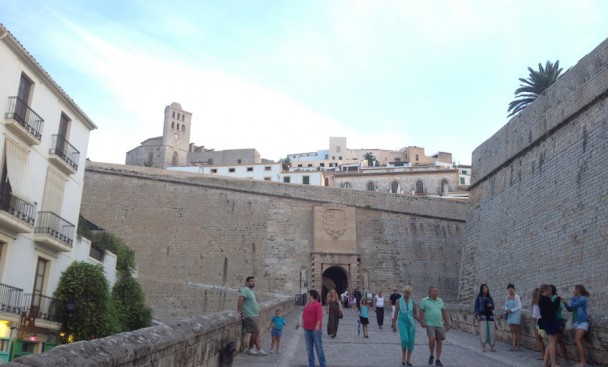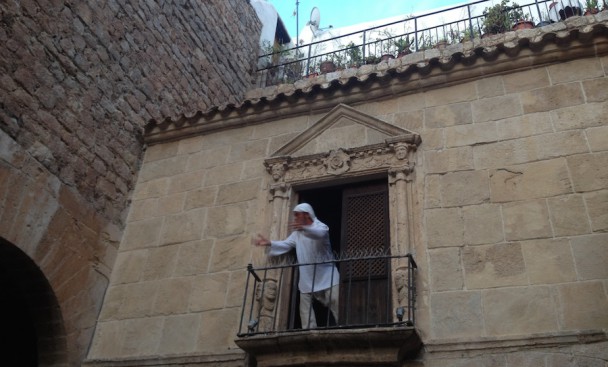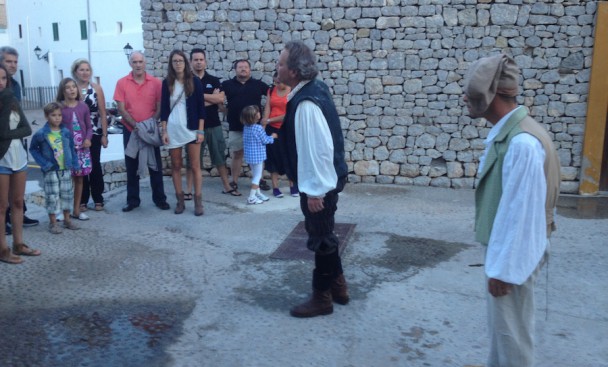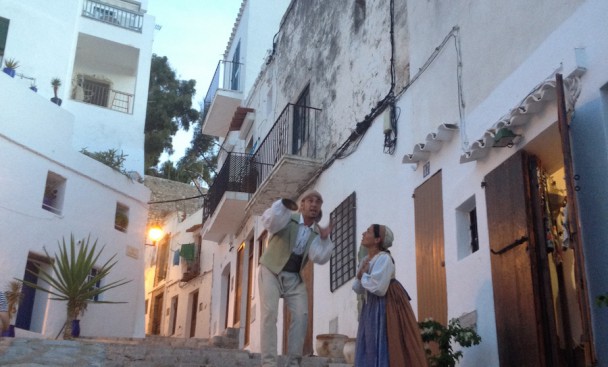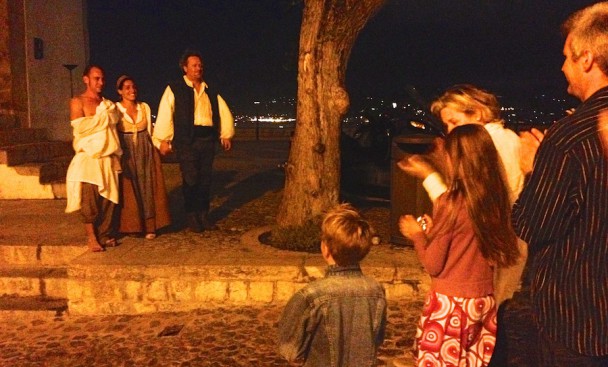In order to tell this beautiful love story, we have to go back to the 16th century, in the midst of Philip II’s Renaissance, when the new wall in Dalt Vila was being built. During this period, the island was under constant threat from the Turks that besieged the coast and the walled city. It was a dangerous place. This was the setting of Pere and Elisabet’s Ibiza, the two lovers that star on this story.
The route starts when evening falls, in front of the entrance ramp to Dalt Vila. It is protected by the stunning Ses Taules portal, one of the five gates into the city. The shield of Philip II opens the doors to the city’s past.
The well-preserved wall is the first thing that stands out. Before Ibiza was conquered by Jaume I in the 13th century, the city was occupied by the Muslims, the first ones to raise the fortress. The remains of Madina Yasiba, the Muslim city, are still visible from some parts of Dalt Villa. Furthermore, they are documented within the museum it has been named after.
Years later, under Philip II’s reign, Italian engineer Giovanni Battista Calvi built the current Renaissance fortress, with towers, strongholds, and thicker walls to protect the city from Ottoman and pirate attacks, since the triple Arab fortress was not enough. The reinforced walls managed to stop pirate attacks from affecting the city, and this is why it has been well preserved until now. It was declared a UNESCO World Heritage Site in 1999.
During this time, in the middle of this construction effervescence, one of the main characters of this story, Pere Francolí, came into play. He was a rich upper class man who lived in a beautiful house in the upper city. He was madly in love with Elisabet, a fair peasant girl, daughter of a small boat patron. Although during the 16th century love between rich and poor was as unthinkable as mixing oil and water, Pere did not abandon his commitment to marry the woman he loved.
The route goes on to Sant Pere stronghold, protected by several cannons and a pit from which hot oil was poured to prevent enemies from entering. From here, there is a splendid view to the new city and to Puig des Molins Necropolis, another one of the island’s jewels, also declared UNESCO World Heritage Site. This was the scenery chosen by Pere to meet with Elisabet in secret and confess his requited undying love. Holding hands, they walked the steep streets up to Cathedral square.
From Sant Pere, we follow Conquista Street, leaving l’Hospitalet church behind us. Night falls over the city, and the streets from the old Jewish neighborhood come to us in mystery. Sant Ciriac chapel, the city’s patron, shows the border between the middle and upper part. The houses become bigger and more elegant as soon as we start walking up to the rich part of the city, were Pere lived. We follow Mayor Street and go by Puget Museum, a good example of the bourgeois architecture of the 19th century.
After being dazzled by the lavish houses, Just Tur Puget old fashion manor for instance, which accommodated no less than Rafael Alberti and María Teresa León in one of their trips to the island, we reach the top. From here we have an amazing view of the city. The stunning lighted Santa María de las Nieves Cathedral, of classic Gothic style and built in the 14th century, hosts visitors that have come to the end of the tour.
Pere suddenly came out from Casa de la Curia and held his dear Elisabet in his arms. They faded into an eternal kiss that takes us to the end of this adventure. The moon takes over the sky and lets its light reflect against the walls.

